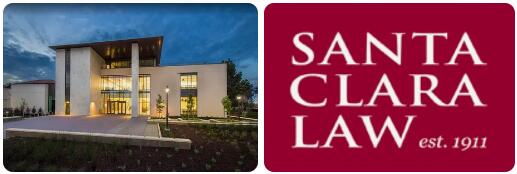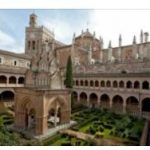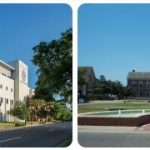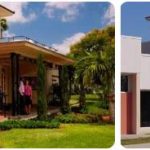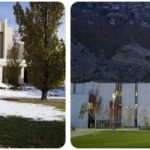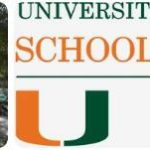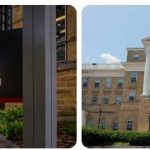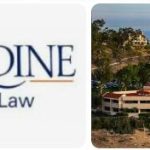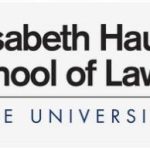Santa Clara University School of Law was founded in 1911 with the mission to provide students with a comprehensive legal education. Since then, the school has grown and expanded its programs to include a variety of concentrations and specializations. The school is located in Santa Clara, California and is currently home to over 600 students. Santa Clara Law’s faculty boasts nationally recognized scholars and practitioners who are committed to teaching excellence. In addition, the school has established itself as a leader in legal technology by offering courses on topics such as e-discovery and artificial intelligence. Santa Clara Law also provides unique opportunities for students to gain practical experience through externships, clinics, and pro bono projects. These experiential learning opportunities provide invaluable real-world experience that prepares students for the challenges they will face when entering the profession. In addition to providing a strong academic foundation, Santa Clara Law also encourages its students to get involved in their community through public service initiatives such as voter registration drives and legal aid clinics. These projects allow students to apply their knowledge while giving back to their local community.
Santa Clara University School of Law is located in the state of California. As one of the leading law programs, Santa Clara University School of Law has a high average LSAT score of 157-161 when recruiting new students. As a return, the median starting salary for law graduates reaches $145,000 per year. See the following table for detailed admissions information and career profiles of Santa Clara University School of Law.
Admissions: Santa Clara University
Santa Clara University School of Law is one of the top law schools in the nation. The school has an acceptance rate of 45%, making it a highly competitive school to get into. In terms of enrollment, the school typically has a total enrollment of about 800 students, with about 200 first-year students accepted each fall. The median LSAT score for accepted applicants is 158 and the median GPA is 3.5. Of those who are admitted, the majority are from California and nearly half are from outside the state. Additionally, many international students attend SCU Law, representing over 30 countries from around the world. The student body is also diverse in terms of gender and ethnicity, with nearly 40% female and 40% identifying as a racial or ethnic minority group.
| Fall 2019 Admissions and Enrollment Statistics | |
|---|---|
| Total number of full- and part-time applicants | 4,580 |
| Total number of full- and part-time acceptances | 1,955 |
| Overall acceptance rate | 42.7% |
| Total number of full- and part-time first-year students enrolled | 311 |
| Number of full-time program applicants | 4,099 |
| Number of full-time program acceptances | 1,826 |
| Full-time acceptance rate | 44.5% |
| Number of first-year full-time students enrolled | 235 |
| Number of part-time program applicants | 481 |
| Number of part-time program acceptances | 129 |
| Part-time acceptance rate | 26.8% |
| Number of first-year part-time students enrolled | 76 |
| Fall 2019 GPA and LSAT Scores | |
| 25th-75th percentile GPA scores for all students | 3.03-3.59 |
| 25th-75th percentile LSAT scores for all students | 157-161 |
| 25th-75th percentile undergraduate GPA for full-time students | 3.11-3.61 |
| 25th-75th percentile LSAT scores for full-time students | 157-161 |
| 25th-75th percentile undergraduate GPA for part-time students | 2.88-3.43 |
| 25th-75th percentile LSAT scores for part-time students | 156-159 |
Careers: Santa Clara University
| Bar Statistics (Winter and Summer 2018 administrations) | |
|---|---|
| State where the greatest number of first-time test takers took the bar | CA |
| School’s bar passage rate for first-time test takers | 78.5% |
| Statewide bar passage rate for first-time test takers | 70.7% |
| Class of 2018 Graduates | |
| Total graduates | 297 |
| Graduates employed at graduation | 79.4% |
| Graduates known to be employed nine months after graduation | 92.6% |
| Starting Salaries of 2018 Graduates Employed Full-time | |
| 25th percentile private sector starting salary | $80,000 |
| Median private sector starting salary | $145,000 |
| 75th percentile private sector starting salary | $160,000 |
| Percent in the private sector who reported salary information | 59% |
| Median public service starting salary | $56,000 |
| Areas of Legal Practice (Class of 2018) | |
| Percent employed in academia | 1.0% |
| Percent employed in business and industry | 26.0% |
| Percent employed in government | 9.0% |
| Percent employed in all judicial clerkships | 2.0% |
| Percent employed in law firms | 57.0% |
| Percent employed in public interest | 4.0% |
| Percent employed in an unknown field | 1.0% |
| Percent employed in a judicial clerkship by an Article III federal judge | 2.0% |
| 2018 Graduates Employment Location | |
| Graduates employed in-state | 90% |
| Graduates employed in foreign countries | 0% |
| Number of states where graduates are employed | 13 |
| New England (CT, ME, MA, NH, RI, VT) | 0.4% |
| Middle Atlantic (NY, NJ, PA) | 2.5% |
| East North Central (IL, IN, MI, OH, WI) | 0.9% |
| West North Central (IA, KS, MN, MO, NE, ND, SD) | 0.4% |
| South Atlantic (DE, DC, FL, GA, MD, NC, SC, VA, WV) | 2.5% |
| East South Central (AL, KY, MS, TN) | 0.0% |
| West South Central (AR, LA, OK, TX) | 0.4% |
| Pacific (AK, CA, HI, OR, WA) | 90.8% |
| Mountain (AZ, CO, ID, MT, NV, NM, UT, WY) | 2.1% |
| Employment location unknown | 0.0% |
| Career Services | |
| (Data appear as originally submitted by this school) | |
| Career services operations | The Career Services Office helps students identify and connect with prospective employers. Services include individual career counseling, workshops on job search strategies, an online alumni database for networking, an annual public interest career and information fair, on-campus interviews, and off-campus job fairs. Current employment statistics are on the school website: http://www.scu.edu/law |
| Job Type | |
| Bar admission required or anticipated (e.g., attorney and corporate counsel positions, law clerks, judicial clerks) | 72.0% |
| J.D. preferred, law degree enhances position (e.g., corporate contracts administrator, alternative dispute resolution specialist, government regulatory analyst, FBI special agent) | 14.0% |
| Professional/other (jobs that require professional skills or training but for which a J.D. is neither preferred nor particularly applicable; e.g., accountant, teacher, business manager, nurse) | 11.0% |
| Nonprofessional/other (job that does not require any professional skills or training or is taken on a temporary basis and not viewed as part of a career path) | 2.0% |
